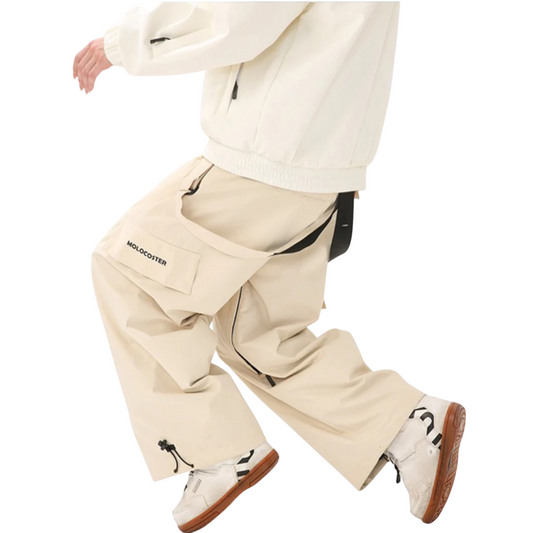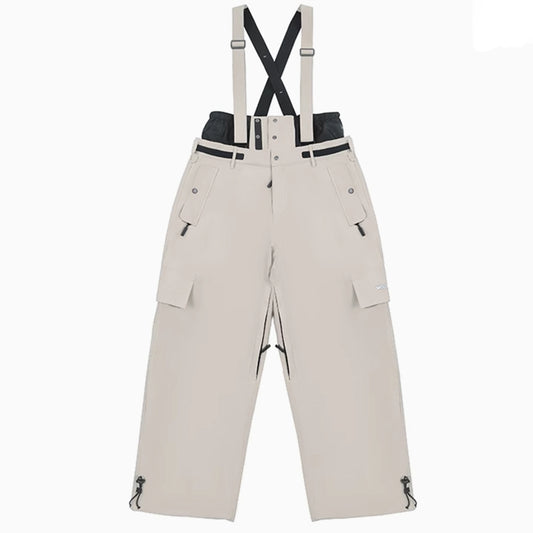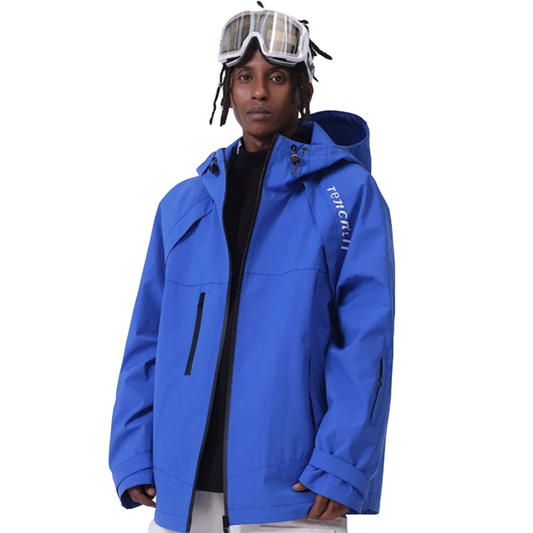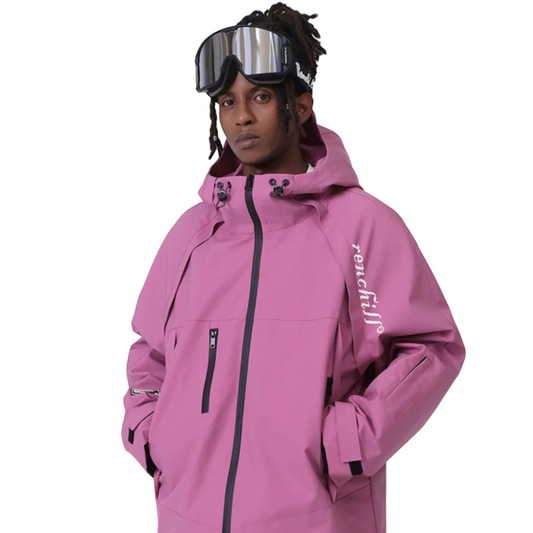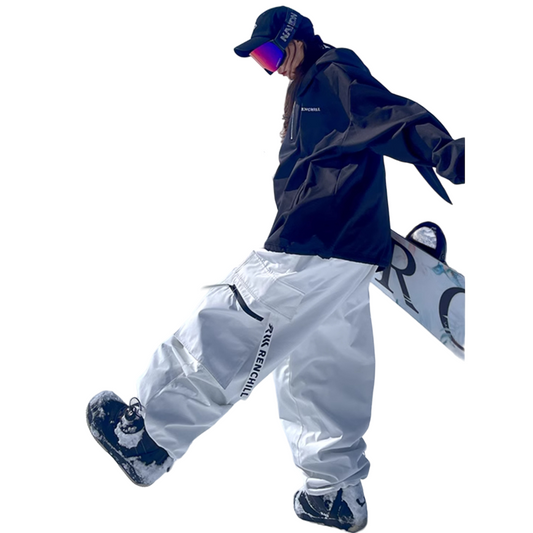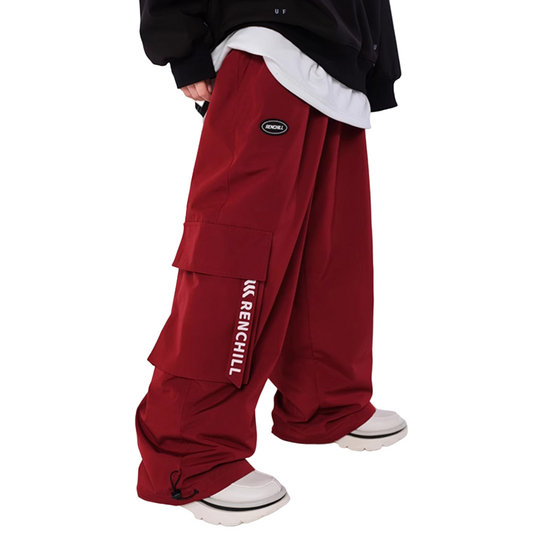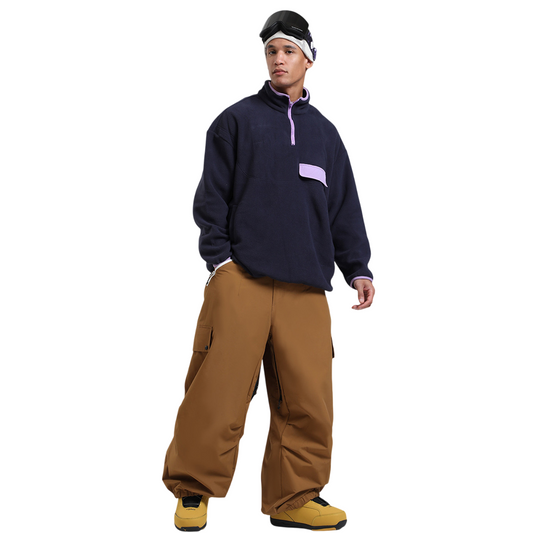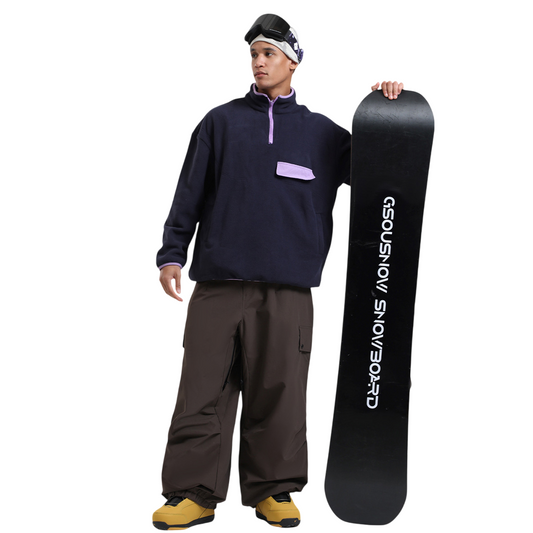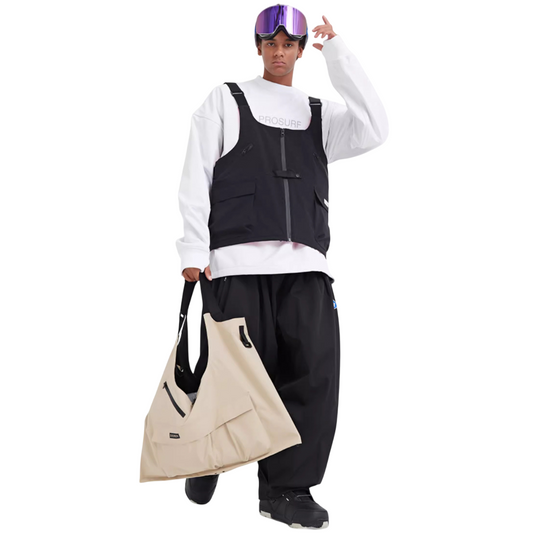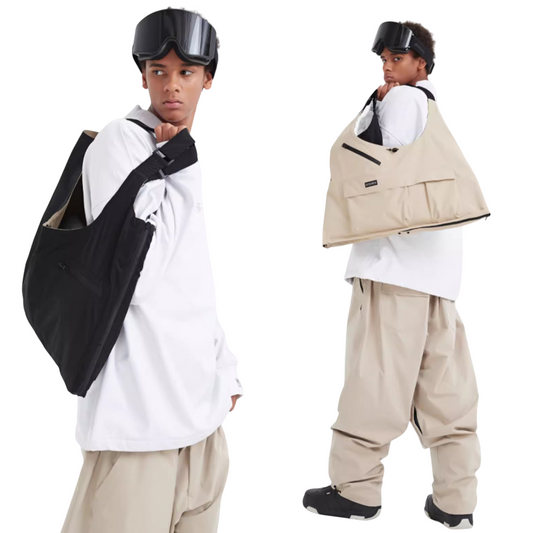When you wonder what to wear under ski pants for your first day on the slopes, start with a base layer that keeps you warm and dry. The importance of layering helps your body retain heat and manage sweat, using fabrics with high R-value and advanced moisture-wicking properties. SNOWMOCACA ski pants pair perfectly with these layers, giving you comfort and flexibility. Remember, a ski helmet completes your outfit. Always wear a ski helmet for safety. A ski helmet protects your head from cold and injury. Choose a ski helmet that fits well. Adjust your ski helmet straps for security. Clean your ski helmet after each trip. SNOWMOCACA supports you with high-performance gear and free shipping on orders over $99.
Key Takeaways
- Wear a moisture-wicking base layer made of synthetic or merino wool under your ski pants to stay warm and dry.
- Use flexible layers like a mid layer and ski socks to adjust your warmth based on weather and activity.
- Choose ski clothing that fits well and moves with your body to stay comfortable and reduce injury risks.
What to Wear Under Ski Pants (Colorado, California & the Alps)
When you ask what to wear under ski pants, you need to focus on three critical layers: a base layer, a mid layer, and ski socks. These layers help you stay warm, dry, and comfortable in different climates.
Base Layer Bottoms
Start with thermal underwear as your base layer. Choose base layer bottoms made from synthetic or merino wool. These materials wick moisture and dry quickly. Polyester base layers dry the fastest, but wool keeps you warmer if it gets wet. Avoid cotton because it traps sweat and makes you cold. For skiing in Colorado or the Sierra Nevada, thermal underwear with a snug fit works best. In the Alps, you may want a thicker base layer or even double up on long underwear for colder days. Base layers for skiing should fit close to your skin but not feel tight.
Mid Layer Options
A skiing mid-layer adds extra warmth between your base layer and ski pants. Down offers the most warmth but loses insulation when wet. Synthetic mid layers keep you warm even if they get damp. Wool mid layers resist odor and last a long time, but they can feel heavy. Fleece dries fast and resists moisture, but it is bulkier. In Colorado, you may skip the mid layer on warm days. In the Alps, bring a mid-layer because the weather can change quickly.
Sock Choices
Ski socks and snowboard socks are not the same as regular socks. Choose ski socks made from merino wool for the best moisture management and warmth. Avoid cotton socks because they trap sweat. Look for snowboard socks with mesh ventilation and terry loop cushioning. Thin ski socks dry faster and keep your feet warmer. In California, you may need lighter snowboard socks, while in the Alps, thicker ski socks help with colder temperatures. Always make sure your ski socks fit well and do not bunch up in your boots.
Tip: Layering right means you stay comfortable all day, no matter where you ski.
|
Region |
Day/Night Temp |
Precipitation |
Layering Recommendations for Ski Pants |
|---|---|---|---|
|
Colorado |
Dry/Storms |
Insulated pants or mid layer for cold, lighter for the sun |
|
|
California |
40s-70s/30s-50s |
Regular rain |
Lighter layers, rain pants for storms |
|
Alps |
N/A |
Regular rain |
Full-coverage rain gear, always bring a mid-layer |
Beginner's Guide to Ski Clothing
How to Dress for Skiing
When you plan what to wear skiing, start with the right layers. A good ski outfit keeps you warm, dry, and comfortable. Here is a simple step-by-step guide to how to dress for skiing:
- Put on a base layer. Choose snug-fitting bottoms and tops made from polyester or merino wool. These fabrics pull sweat away from your skin and help you stay warm. Never use cotton because it holds moisture and makes you cold.
- Add a mid-layer. Fleece or a lightweight puffy jacket works well. This layer traps heat and gives you extra insulation. You can add or remove this layer depending on the weather.
- Wear a waterproof shell. Your ski pants and jacket should block wind and snow. The shell keeps you dry but does not add much warmth.
- Finish with accessories. Gloves, neck gaiters, and goggles protect your hands, face, and eyes from cold and the sun.
Many new skiers want to know how to layer for skiing. This method lets you adjust your ski clothing for changing weather and activity levels.
Layering Tips for First-Timers
Layering for skiing can feel confusing at first. Many beginners make mistakes like wearing too many layers or choosing the wrong fabrics. You should pick ski clothing that fits well and lets you move easily. Look for base and mid layers that offer breathability and insulation. The ski clothing market shows that most beginners want comfort, warmth, and affordable options. Online stores make it easy to find specialized layers for your first ski trip. Remember, how to dress for skiing is all about comfort and flexibility. If you follow this beginner's guide to ski clothing, you will enjoy your time on the slopes.
Tip: Try on your full ski outfit at home before your trip. Make sure you can move, bend, and stretch without feeling restricted.
SNOWMOCACA Ski Pants & Collections
SNOWMOCACA believes that skiing is more than a sport. You experience adventure, comfort, and style every time you hit the slopes. The brand designs ski pants and snowboard pants with advanced technology to keep you warm, dry, and moving freely. You benefit from high-performance features that make every trip memorable.
|
Feature |
Specification/Benefit |
|---|---|
|
Waterproof Rating |
45K (highly waterproof with DWR finish) |
|
Insulation |
Thinsulate® Gold (provides warmth without bulk) |
|
Material Durability |
Cordura® 600D reinforcements (enhanced durability) |
|
Additional Features |
Adjustable suspenders, articulated joints for fit |
|
Breathability & Windproof |
Breathable and windproof for extreme cold |
|
Convenience Details |
YKK Aquaguard® zippers, 320° drop seat |
Women's Ski & Snow Pants
You can choose from slim, regular, or loose fits in the women's ski pants collection. Each fit offers a different level of comfort and style, so you can find what works best for you. Some pants have high waists for extra warmth, while others use stretchy fabrics for easy movement. You do not have to follow strict rules—pick what feels right. The collection includes options for both ski pants and snowboard pants, so you can match your gear to your activity. Explore the Women's Ski & Snow Pants for more choices.
Men's Ski & Snow Pants
The men's collection focuses on durability and insulation. You get pants with abrasion-resistant fabrics and reinforced scuff guards, which help your gear last longer. Many pants use synthetic insulation like Thermolite to keep you warm without overheating. Features such as adjustable waists, zippered pockets, and articulated knees improve comfort and performance. You can also find snowboard pants with straight cuts and extra ventilation for active days. Check out the Men's Ski & Snow Pants for the latest designs.
Style Options: Baggy, Bib, and More
You have many style options, from baggy snowboard pants to fitted ski pants and bibs. Baggy styles give you more room to move, while bibs offer extra coverage and storage with chest and leg pockets. Modern bibs use lightweight materials and vents, so you stay comfortable. Some skiers prefer bibs for their warmth and protection, especially in deep snow. Others like the freedom of regular ski pants or snowboard pants. Your choice depends on your needs and personal style.
SNOWMOCACA ski apparel stands out for its technical performance and customer satisfaction.
You can enjoy free shipping on all orders over $99 at snowmocaca.com.
How to Dress for Skiing in Different Conditions
Cold Weather Layering
When you face very cold days on the slopes, you need to use a three-layer system for the best warmth and protection. Start with a snug, moisture-wicking base layer made from merino wool or synthetic fibers. This layer keeps sweat away from your skin and helps you stay dry. Choose a mid layer, such as fleece or a synthetic insulated jacket, to trap warm air and add insulation. Your outer layer should be waterproof and breathable to block wind, snow, and rain. Down jackets give you a high warmth-to-weight ratio, but synthetic options keep you warm even if they get damp. Make sure each layer fits well but does not restrict your movement. Layering for skiing in cold weather lets you adjust your outfit as your activity level or the temperature changes.
Tip: Pick base layers in different weights—lightweight for mild cold, heavyweight for freezing days. This helps you customize your warmth.
Mild Weather Adjustments
On mild days, you can skip the mid layer or choose lighter options. Wear a base layer and a shell for protection against wind and moisture. Adjustable ski pants and articulated knees help you move freely and stay comfortable. Many skiers use 3-in-1 jackets or shells with removable insulation for flexibility. You might add or remove neck tubes or thin gloves as needed. Layering for skiing in mild weather means you can react quickly to changing conditions and avoid overheating.
- Adjustable clothing and variable insulation help you stay comfortable.
- Flexible layers let you enjoy the slopes without feeling bulky.
Base Layer Bottoms: Materials and Fit
Best Fabrics for Skiing
When you choose thermal underwear for skiing, you want fabrics that keep you warm, dry, and comfortable. The two most popular options for base layer bottoms are synthetic materials and merino wool. Both have unique strengths. Synthetic thermal underwear, like polyester, dries quickly and resists wear and tear. Merino wool thermal underwear feels soft, keeps you warm even when wet, and naturally resists odors.
Here’s a quick comparison to help you decide:
|
Attribute |
Synthetic Fabrics |
Merino Wool Fabrics |
|---|---|---|
|
Durability |
Very durable; great for frequent washing |
Softer; can pill or tear, but blends improve strength |
|
Moisture Management |
Wicks sweat fast; dries quickly |
Absorbs more moisture; stays warm even when damp |
|
Odor Resistance |
Can trap odors over time |
Naturally resists odor, even after long use |
|
Warmth |
Lighter, dries fast, less warm when wet |
Excellent insulation, warm even when wet |
Lab tests show that both merino wool and synthetic base layers offer good thermal retention and moisture control. Synthetic fabrics excel in quick drying and breathability, while merino wool balances warmth and moisture management. For high-intensity skiing, synthetic base layer bottoms work well. For multi-day trips or colder weather, merino wool thermal underwear is a top choice.
Why Avoid Cotton
You should avoid cotton for your base layer or long underwear. Cotton absorbs sweat and holds onto moisture. This makes you feel cold and damp, especially after you start to sweat or if snow gets inside your pants. Cotton dries slowly, so you lose warmth and comfort. Performance fabrics like merino wool or synthetics keep you dry and warm by moving sweat away from your skin.
Tip: Choose base layer bottoms that fit snugly but allow you to move freely. Try on your thermal underwear before your trip to make sure it feels comfortable under your ski pants.
Comfort and Safety Tips
Fit and Flexibility
You need ski clothing that fits well and moves with your body. A proper fit helps you stay safe on the slopes. Studies show that alpine skiing has a high injury rate, with up to 1.4 million injuries worldwide each year. Most injuries affect the knees and lower body. When your ski pants and jacket fit correctly, you reduce the risk of falls and strains. A good fit also improves your control and balance. Scientific research on athletic gear shows that flexible clothing lets you change direction faster and move more efficiently. You gain better power and control, which helps prevent injuries. Look for ski pants with articulated knees, stretch fabrics, and adjustable waistbands. These features let you bend, twist, and crouch without feeling restricted.
- Choose pants with ergonomic tailoring for natural movement.
- Try on your gear before your trip to check for comfort and range of motion.
Tip: A snug but not tight fit keeps you warm and safe while skiing.
Moisture Management
Staying dry is just as important as staying warm. Modern ski clothing uses advanced fabrics and design features to manage sweat and moisture. Tests with thermal manikins and real athletes show that fabric structure and garment design affect how much heat and moisture you lose. Breathable materials, like those found in high-quality ski pants, help release sweat while blocking snow and wind. Features such as underarm zips, mesh linings, and waterproof membranes keep you comfortable during intense activity. Studies comparing different sportswear fabrics found that materials like polyester mesh and Tencel keep your body cooler and drier, which helps you perform better and stay safe. Always wear moisture-wicking base layers and ski socks to help manage sweat and prevent chills.
- Pick ski pants with ventilation zippers for extra airflow.
- Avoid cotton layers, as they trap moisture and make you cold.
Note: Proper moisture management keeps you comfortable and reduces the risk of overheating or getting too cold on the slopes.
You can improve your skiing experience by choosing proper layers, high-quality materials, and a comfortable fit.
- Moisture-wicking base layers and insulating mid-layers keep you warm and dry.
- Flexible layering lets you adjust for changing weather.
SNOWMOCACA offers both style and performance. Enjoy free shipping over $99 and have fun on your first ski trip!
FAQ
What should you wear under ski pants for maximum comfort?
You should wear a moisture-wicking base layer made from synthetic or merino wool. This keeps you dry and warm during your time on the slopes.
Can you wear leggings or jeans under ski pants?
You should avoid jeans. Leggings work only if they are made of synthetic or wool material. Cotton traps moisture and makes you cold.
Do you need a neck gaiter or balaclava for skiing?
You should wear a neck gaiter or balaclava on cold or windy days. This protects your face and neck from harsh weather and keeps you comfortable.








